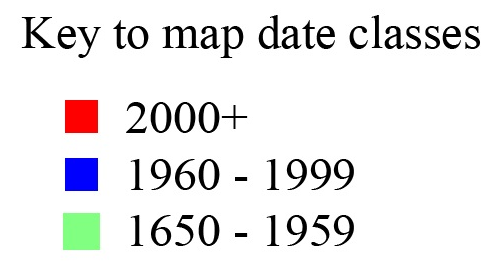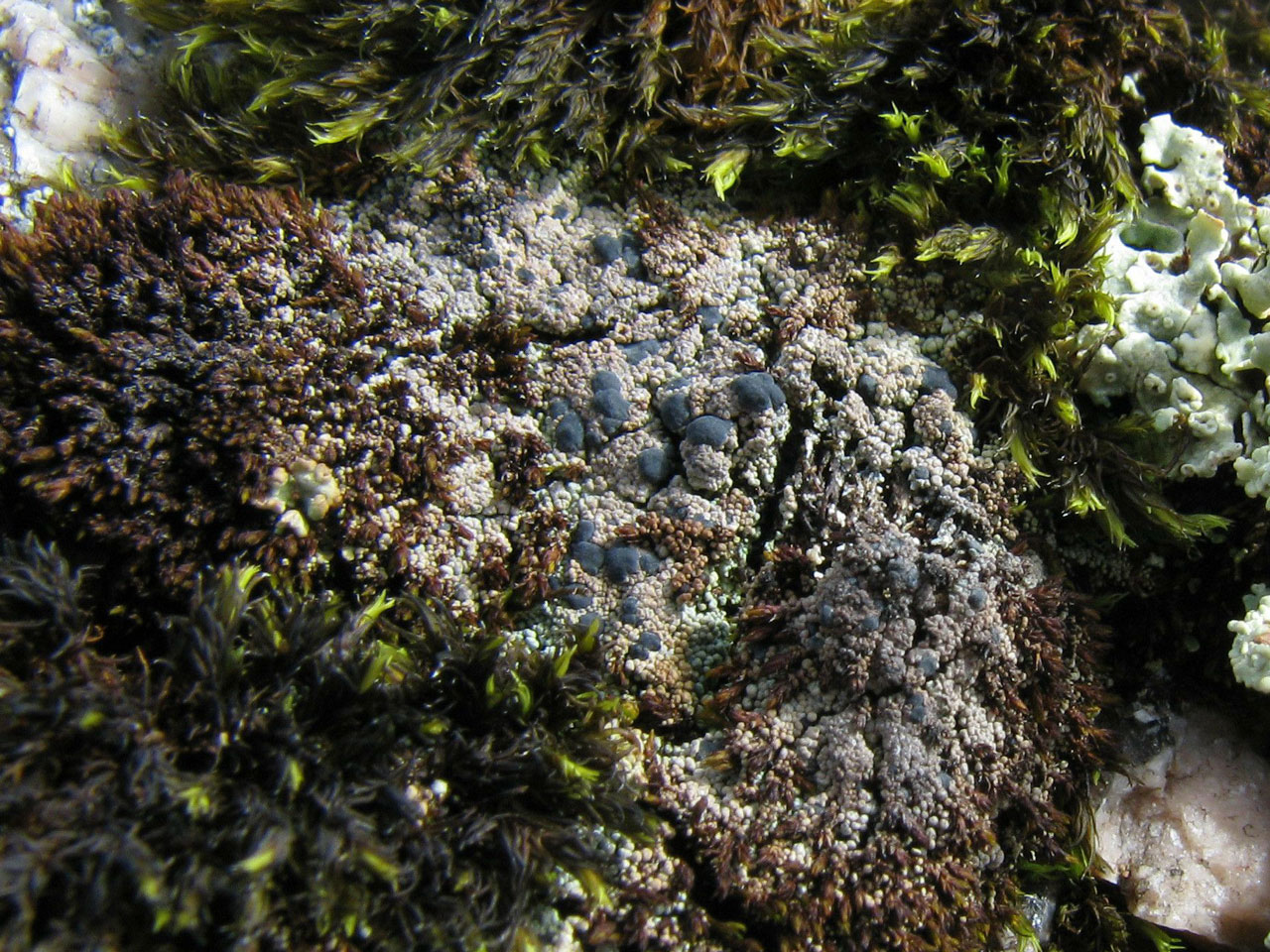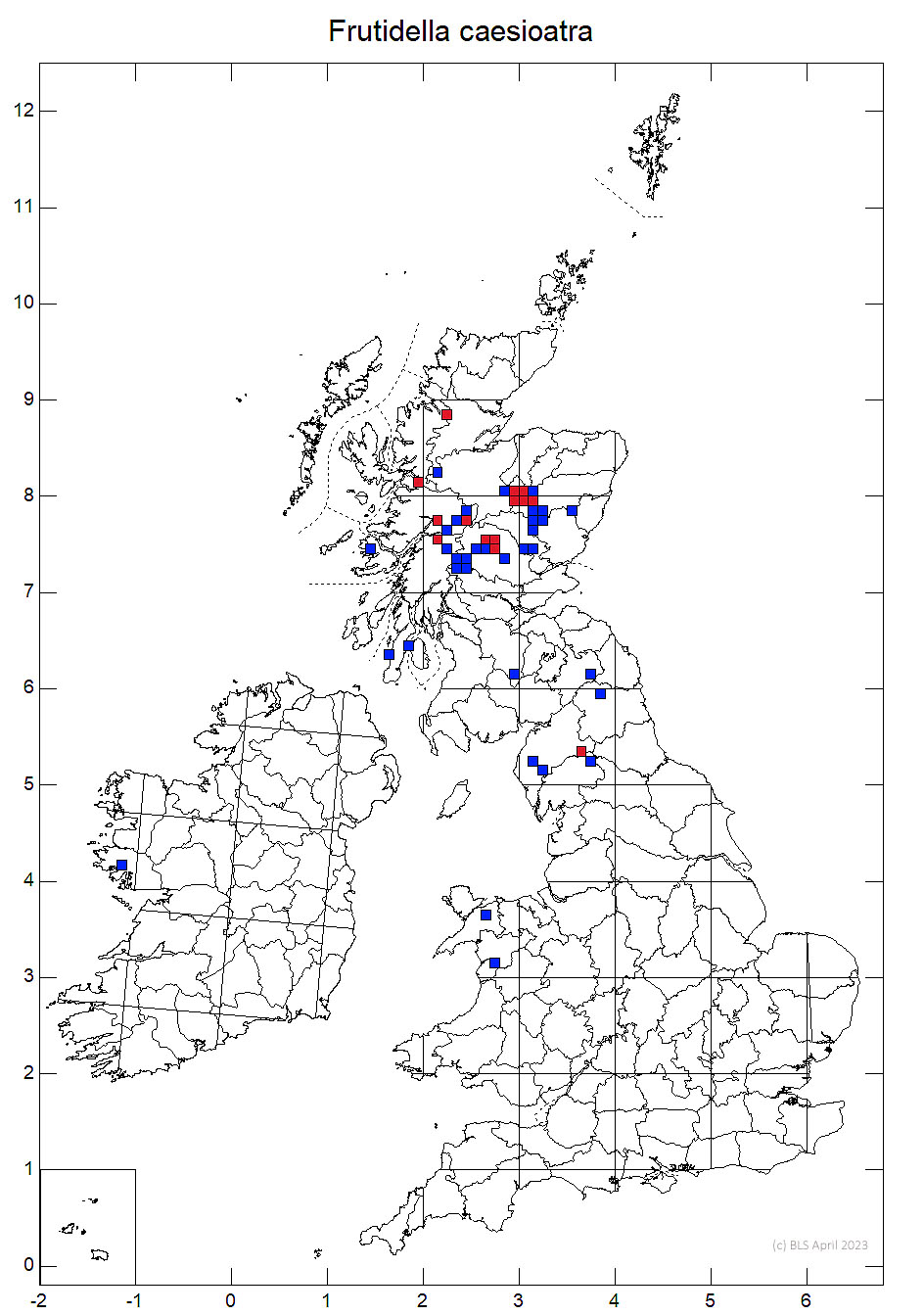A distinctive lichen of late snow lie habitats, with a brownish thallus of dense subglobose granules which are UV+ blue-white and bluish black apothecia often with blue-grey pruina especially when wet. Mainly found in the Scottish Highlands, but with records from Northern England, North Wales and a single Irish record.
Thallus crustose, rather thick, strongly warted-papillate, with dense subglobose, ± isidioid granules 0.1–0.2 mm diam., grey to dark grey or almost black, whitish when eroded; prothallus absent; photobiont chlorococcoid, cells 6–12 µm diam. Apothecia frequent, subglobose to ± hemispherical, sometimes tuberculate, sessile, often partly hidden by thallus granules, (0.3–) 0.5–1 (–1.2) mm diam., bluish black or with blue-grey pruina especially when wet; true exciple well-developed, not carbonised, colourless or with the outer parts dull yellowish, of radiating conglutinated hyphae (in K) ca 1.5-2 µm diam.; epithecium and upper part of the hymenium bright blue-green, K–; hymenium 50–65 (–75) µm tall; hypothecium ± colourless to reddish brown or almost violet, K+ reddish orange; paraphyses 1.3–1.8 µm diam., sparsely branched, sometimes anastomosing, apices not markedly swollen but with individual colourless gel coats. Asci 8-spored, 50–60 × 15–20 µm, elongate-clavate, with a broad, K/I+ blue, apical cushion. Ascospores aseptate, (11–) 15–19 (–26) × 5–7 (–9) µm, ellipsoidal, colourless, without a perispore. Pycnidia occasional, immersed or half immersed, globose or pear-shaped with pigmented apices; conidia filiform, 15–25 × 0.7–1 µm. Thallus C–, Pd–, UV+ blue-white (sphaerophorin, thiophanic acid and occasionally isoarthothelin and asemone).
Sometimes mistaken for Micarea assimilata and M. incrassata, which have apothecia without a bluish-pruinose bloom, smaller photobiont cells (4–7 µm diam.), and have thalli which are UV–.
On mosses, particularly Andreaea, Grimmia and Rhacomitrium, over acid soil or schistose boulders; locally abundant above 700 m particularly in areas of late snow lie.

N.W. England (Lake District, Cross Fell), Wales (Snowdonia), Scotland (especially the Highlands), Ireland (Galway).
A montane species potentially threatened but climate change, especially south of the Highlands.
Britain: Notable
Wales: Vulnerable
Cannon, P., Coppins, B., Aptroot, A., Fryday, A., Sanderson, N., Simkin, J. & Yahr, R. (2024). Miscellaneous Lecanorales including Biatorella(Biatorellaceae), Carbonicola (Carbonicolaceae), Haematomma(Haematommataceae), Psilolechia (Psilolechiaceae), Ramboldia(Ramboldiaceae), Scoliciosporum (Scoliciosporaceae), and Adelolecia, Catinaria, Frutidella, Herteliana, Lithocalla, Myochroidea, Puttea and Schadonia (of uncertain position). Revisions of British and Irish Lichens42: 1–23.

